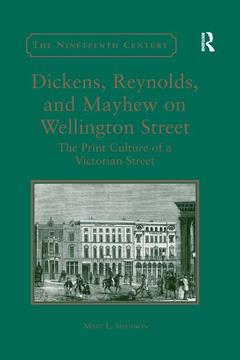Description
Dickens, Reynolds, and Mayhew on Wellington Street
The Print Culture of a Victorian Street
The Nineteenth Century Series
Author: Shannon Mary L.
Language: English
Subjects for Dickens, Reynolds, and Mayhew on Wellington Street:
Keywords
print; culture; networks; melbourne; punch; collins; north; london; topographical; Wellington Street North; society; Young Man; Reynolds’s Weekly Newspaper; Print Networks; Print Culture; London Print Culture; Reynolds’s Political Instructor; Lyceum Theatre; Melbourne Punch; Lady Dedlock; Nineteenth Century Print Culture; Mrs Bagnet; Australian Facts; Mysteries Series; Mr Tulkinghorn; Senate House Library; RM; Bleak House; Covent Garden Theatre; Madame Vestris; Martin Chuzzlewit; Trafalgar Square; Esther’s Face; Norman St John Stevas; London Labour
Publication date: 12-2019
· 15.6x23.4 cm · Paperback
Publication date: 04-2015
· 15.6x23.4 cm · Hardback
Description
/li>Contents
/li>Biography
/li>
Morning: 'the smallness of the world'. Afternoon: 'dissolute and idle persons'. Evening: 'the showman introduces himself'. Night: 'the compass of the world and they that dwell therein'. Conclusion: 'very curiously brought together' by Bleak House.
Mary L. Shannon received her BA from the University of Cambridge and her PhD from King’s College London. She is a postdoctoral research fellow in the Department of English and Creative Writing, University of Roehampton, London. She works on early nineteenth-century print culture and visual culture, with particular interests in literary networks, cultural geography, periodicals, and literature about London.




